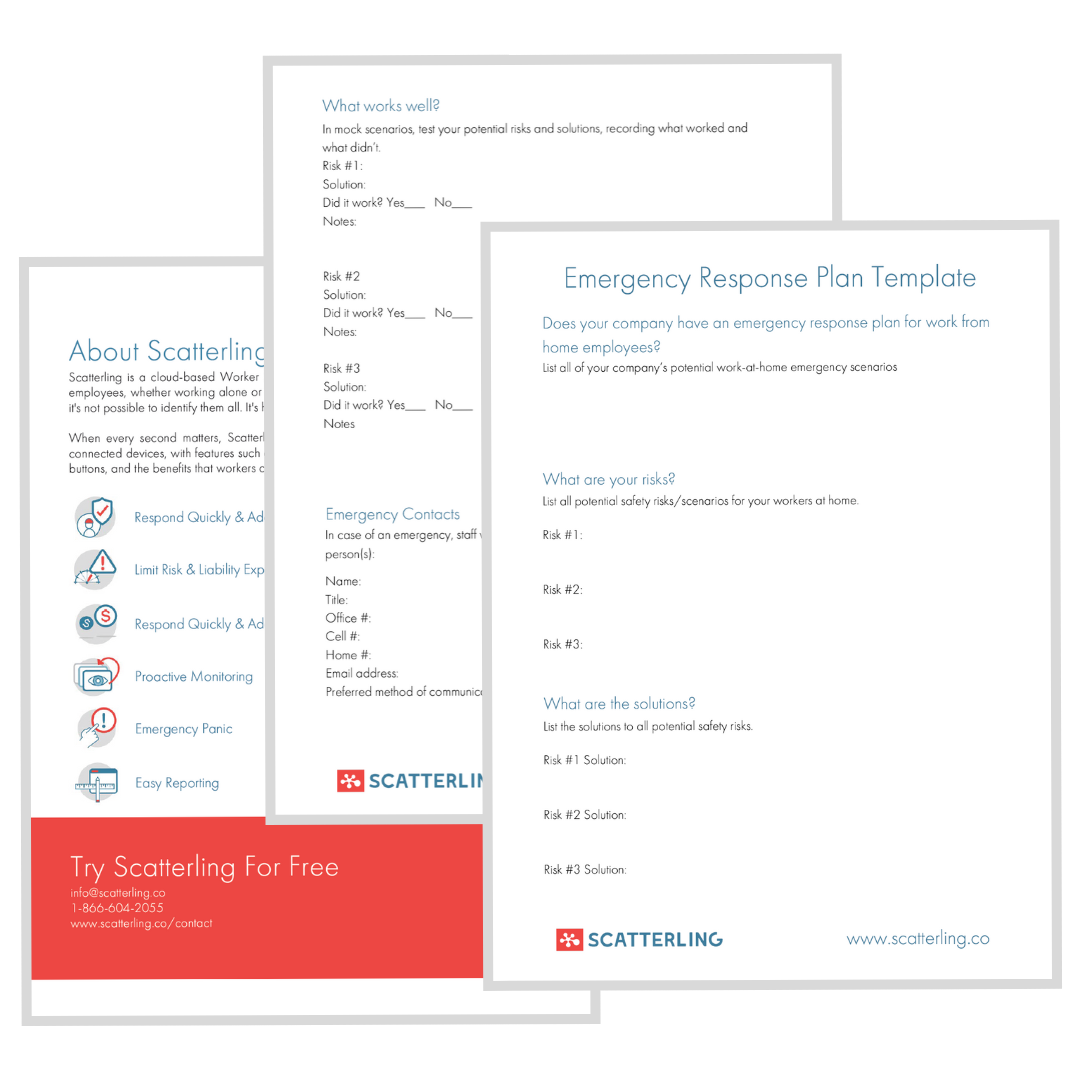In the case of an emergency, do you have a response plan that you can follow to make sure your team members will come out of it unharmed? Along with the right tools and guidance, an emergency response plan is a proactive tool that allows you to successfully minimize work-at-home risks and quickly respond to emergencies with employees working at home. With COVID-19 forcing many employees to work remotely, as an employer, you are responsible for the safety of your team while working at home. Developing an emergency response plan is an effective way to keep your people safe.
While developing an emergency response plan, it is important to understand the unique scenarios and risks each of the employees who now work from home have. Because working from home is new to your workforce, you must think about the policies and procedures you currently have in place. How are your current policies and procedures transferring over to people who now work from home? Are you aware of their identified risks? Have they described to you the set-up and components of their new work-from-home space? What happens if an emergency was to occur? As an employer or a health and safety professional, does your workforce have the tools and procedures to help them handle an emergency?
While the needs of every organization and team are different, here are five essential questions any company can ask when developing an effective emergency response plan for at-home workers.
What Are The Regulations?
Is your organization complying with the lone worker guidelines in your State? How do these guidelines apply to those working at home? These might be obvious questions, but they must be addressed when developing an emergency response plan. Not only will it keep your valuable team safe, but it will protect you from any possible fines and legal litigation.
What are the risks?
Thoroughly assess what the unique risks are for your workers at home. Try to imagine every potential scenario in which these workers might experience an emergency and then see if your organization has the resources in place to respond to such situations.
What are the solutions?
Once you have recognized the potential risks and emergency scenarios with your workers at home, you then need to look at the solutions. They can include worker check-in tools, alarm devices, a simple fire alarm, or an ergonomic chair that will prevent injury. These depend on which risks you have identified.
wHAT WORKS?
The only way to see if your solutions are effective is to test them in mock scenarios. These exercises will not only determine if they work, but they will also be good practice for the team as well as safe opportunities to tweak your solutions as needed. We recommend you run through the scenarios several times before you put final plans on paper.
wHO ARE THE CONTACTS?
When developing this plan, you also need to include the emergency contact information of any employees who need to know/can provide guidance if an emergency is taking place. This will also include the preferred methods of communication such as simple voice call, text, etc.
Develop Your Own Emergency Response Plan
Developing an emergency response plan requires serious reflection of what your organization needs and what safety risks it may experience. When developing this vital plan, we recommend you consult with your team members about their thoughts for each of the five questions above.
To help you develop a solid emergency response plan, here is a free questionnaire to help guide this planning, which poses the five key questions outlined on this blog that you should ask before you start.


